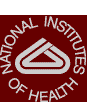
|
Abstracted from Medical Tribune News Service Vitamin E Battles Prostate Cancer, Study Finds
Finnish men who took 50 milligrams of vitamin E daily for five to eight years had a 32 percent lower rate of symptomatic prostate cancer than men who did not take the supplement. Men who took the vitamin also had a 41 percent lower death rate from the disease, researchers reported in a recent issue of the Journal of the National Cancer Institute. "This intriguing observation suggests that vitamin E has the potential to prevent one of the most common malignant tumors in the North American and European populations," according to lead researcher Dr. Olli P. Heinonen of the University of Helsinki. But vitamin E appeared to prevent only the aggressive, fast-growing stage of the disease. Supplements did not reduce the incidence of latent, non-symptomatic prostate cancer, the study showed. The study authors speculated that the antioxidant properties of vitamin E may help stave off prostate cancer by fighting oxygen-free radicals, which are believed to promote cancer. Vitamin E may also boost a person's immune system, they added. The Finnish researchers along with investigators from the NCI based their findings on 29,133 male smokers ages 50 to 69 living in southwestern Finland. The study was originally designed to study the effects of vitamin E and beta-carotene on lung-cancer risk. Beta-carotene (20 milligrams a day) appeared to have a protective effect against prostate cancer, but only in men who did not drink any alcohol, according to the report. For reasons that researchers do not understand, beta-carotene supplements actually increased the risk of prostate cancer in men who drank. But doctors shouldn't rush to recommend vitamin E supplements until further research confirms the finding, said Dr. Otis Brawley, assistant director for special populations research at the NCI who did not participate in the study. ----- |
![]()
